Raphael Canals
Enhancing DeepLabV3+ to Fuse Aerial and Satellite Images for Semantic Segmentation
Mar 28, 2025Abstract:Aerial and satellite imagery are inherently complementary remote sensing sources, offering high-resolution detail alongside expansive spatial coverage. However, the use of these sources for land cover segmentation introduces several challenges, prompting the development of a variety of segmentation methods. Among these approaches, the DeepLabV3+ architecture is considered as a promising approach in the field of single-source image segmentation. However, despite its reliable results for segmentation, there is still a need to increase its robustness and improve its performance. This is particularly crucial for multimodal image segmentation, where the fusion of diverse types of information is essential. An interesting approach involves enhancing this architectural framework through the integration of novel components and the modification of certain internal processes. In this paper, we enhance the DeepLabV3+ architecture by introducing a new transposed conventional layers block for upsampling a second entry to fuse it with high level features. This block is designed to amplify and integrate information from satellite images, thereby enriching the segmentation process through fusion with aerial images. For experiments, we used the LandCover.ai (Land Cover from Aerial Imagery) dataset for aerial images, alongside the corresponding dataset sourced from Sentinel 2 data. Through the fusion of both sources, the mean Intersection over Union (mIoU) achieved a total mIoU of 84.91% without data augmentation.
Deep Learning for Spatio-Temporal Fusion in Land Surface Temperature Estimation: A Comprehensive Survey, Experimental Analysis, and Future Trends
Dec 21, 2024Abstract:The rapid advancements in satellite remote sensing have enhanced the capability to monitor and analyze the Earth's surface. Among the many variables captured through satellite sensors, Land Surface Temperature (LST) plays a critical role in understanding key environmental processes. However, obtaining high-resolution LST data remains a challenge, as satellite sensors often face a trade-off between spatial and temporal resolutions. In response, Spatio-Temporal Fusion (STF) has emerged as a powerful method to integrate two satellite data sources, one providing high spatial but low temporal resolution, and the other offering high temporal but low spatial resolution. Although a range of STF techniques have been proposed, from traditional methods to cutting-edge deep learning (DL) models, most have focused on surface reflectance, with limited application to LST estimation. DL approaches, in particular, show promise in improving the spatial and temporal resolutions of LST by capturing complex, non-linear relationships between input and output LST data. This paper offers a comprehensive review of the latest advancements in DL-based STF techniques for LST estimation. We analyze key research developments, mathematically formulate the STF problem, and introduce a novel taxonomy for DL-based STF methods. Furthermore, we discuss the challenges faced by current methods and highlight future research directions. In addition, we present the first open-source benchmark STF dataset for LST estimation, consisting of 51 pairs of MODIS-Landsat images spanning from 2013 to 2024. To support our findings, we conduct extensive experiments on state-of-the-art methods and present both quantitative and qualitative assessments. This is the first survey paper focused on DL-based STF for LST estimation. We hope it serves as a valuable reference for researchers and paves the way for future research in this field.
Generative models-based data labeling for deep networks regression: application to seed maturity estimation from UAV multispectral images
Aug 09, 2022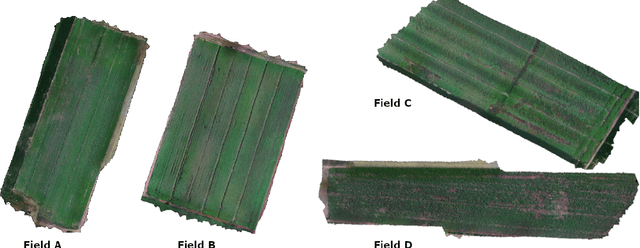
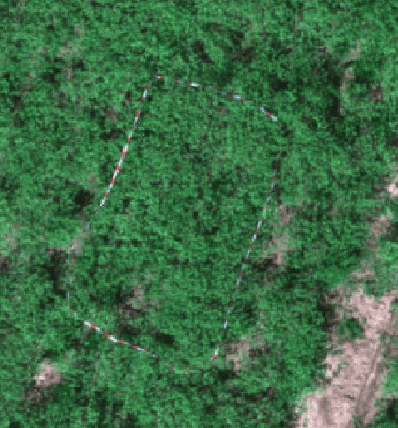
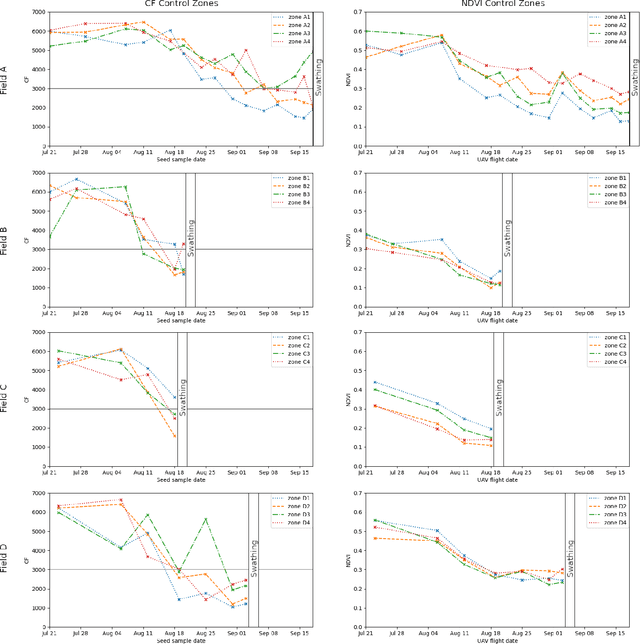
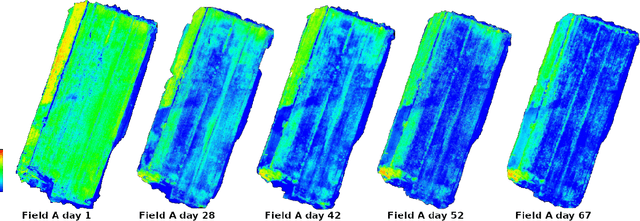
Abstract:Monitoring seed maturity is an increasing challenge in agriculture due to climate change and more restrictive practices. Seeds monitoring in the field is essential to optimize the farming process and to guarantee yield quality through high germination. Traditional methods are based on limited sampling in the field and analysis in laboratory. Moreover, they are time consuming and only allow monitoring sub-sections of the crop field. This leads to a lack of accuracy on the condition of the crop as a whole due to intra-field heterogeneities. Multispectral imagery by UAV allows uniform scan of fields and better capture of crop maturity information. On the other hand, deep learning methods have shown tremendous potential in estimating agronomic parameters, especially maturity. However, they require large labeled datasets. Although large sets of aerial images are available, labeling them with ground truth is a tedious, if not impossible task. In this paper, we propose a method for estimating parsley seed maturity using multispectral UAV imagery, with a new approach for automatic data labeling. This approach is based on parametric and non-parametric models to provide weak labels. We also consider the data acquisition protocol and the performance evaluation of the different steps of the method. Results show good performance, and the non-parametric kernel density estimator model can improve neural network generalization when used as a labeling method, leading to more robust and better performing deep neural models.
Vision Transformers For Weeds and Crops Classification Of High Resolution UAV Images
Sep 06, 2021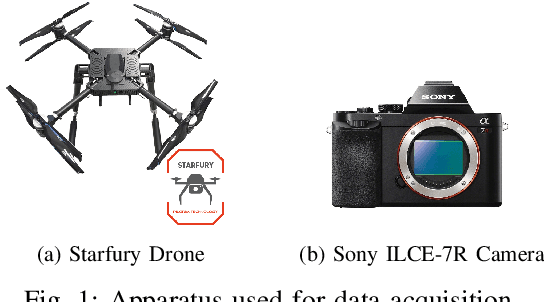
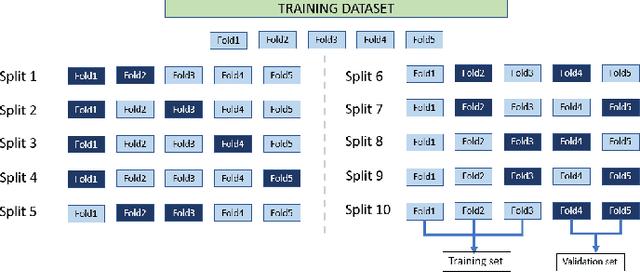
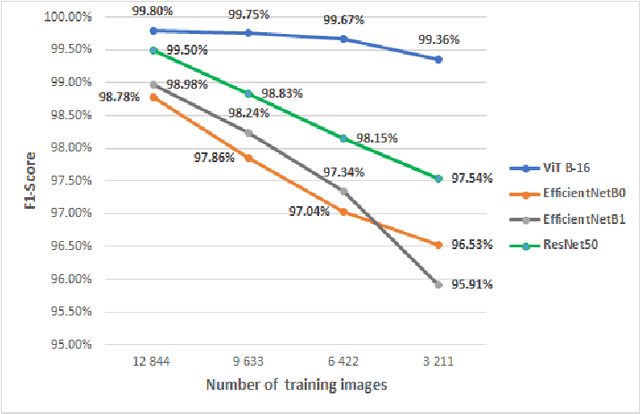
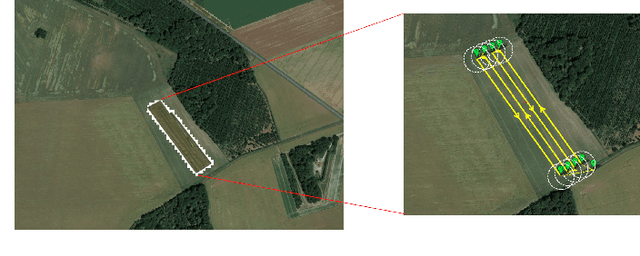
Abstract:Crop and weed monitoring is an important challenge for agriculture and food production nowadays. Thanks to recent advances in data acquisition and computation technologies, agriculture is evolving to a more smart and precision farming to meet with the high yield and high quality crop production. Classification and recognition in Unmanned Aerial Vehicles (UAV) images are important phases for crop monitoring. Advances in deep learning models relying on Convolutional Neural Network (CNN) have achieved high performances in image classification in the agricultural domain. Despite the success of this architecture, CNN still faces many challenges such as high computation cost, the need of large labelled datasets, ... Natural language processing's transformer architecture can be an alternative approach to deal with CNN's limitations. Making use of the self-attention paradigm, Vision Transformer (ViT) models can achieve competitive or better results without applying any convolution operations. In this paper, we adopt the self-attention mechanism via the ViT models for plant classification of weeds and crops: red beet, off-type beet (green leaves), parsley and spinach. Our experiments show that with small set of labelled training data, ViT models perform better compared to state-of-the-art CNN-based models EfficientNet and ResNet, with a top accuracy of 99.8\% achieved by the ViT model.
Deep Learning with unsupervised data labeling for weeds detection on UAV images
May 31, 2018



Abstract:In modern agriculture, usually weeds control consists in spraying herbicides all over the agricultural field. This practice involves significant waste and cost of herbicide for farmers and environmental pollution. One way to reduce the cost and environmental impact is to allocate the right doses of herbicide at the right place and at the right time (Precision Agriculture). Nowadays, Unmanned Aerial Vehicle (UAV) is becoming an interesting acquisition system for weeds localization and management due to its ability to obtain the images of the entire agricultural field with a very high spatial resolution and at low cost. Despite the important advances in UAV acquisition systems, automatic weeds detection remains a challenging problem because of its strong similarity with the crops. Recently Deep Learning approach has shown impressive results in different complex classification problem. However, this approach needs a certain amount of training data but, creating large agricultural datasets with pixel-level annotations by expert is an extremely time consuming task. In this paper, we propose a novel fully automatic learning method using Convolutional Neuronal Networks (CNNs) with unsupervised training dataset collection for weeds detection from UAV images. The proposed method consists in three main phases. First we automatically detect the crop lines and using them to identify the interline weeds. In the second phase, interline weeds are used to constitute the training dataset. Finally, we performed CNNs on this dataset to build a model able to detect the crop and weeds in the images. The results obtained are comparable to the traditional supervised training data labeling. The accuracy gaps are 1.5% in the spinach field and 6% in the bean field.
 Add to Chrome
Add to Chrome Add to Firefox
Add to Firefox Add to Edge
Add to Edge